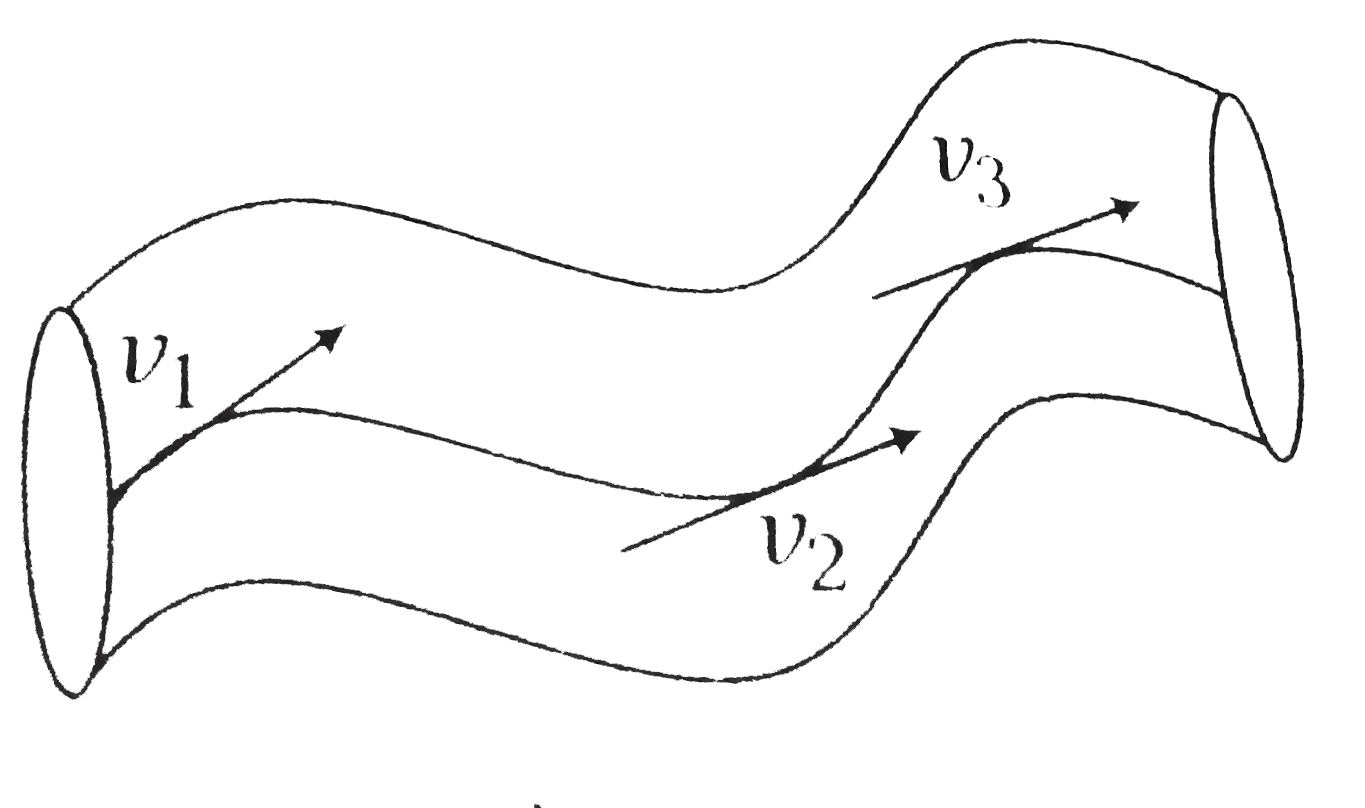Streamline flow is more likely for liquid with
high denisty
high viscosity
low density
low viscosity
The correct Answer is:B, C
To determine the conditions under which a liquid exhibits streamline flow, we can analyze the Reynolds number, which is a dimensionless quantity used to predict flow patterns in different fluid flow situations. Here’s a step-by-step solution to the question:
Step 1: Understand the Reynolds Number
The Reynolds number (Re) is defined as:
Re=ρvDη
where:
- ρ = density of the fluid
- v = velocity of the fluid
- D = characteristic length (for a pipe, it is the diameter)
- η = dynamic viscosity of the fluid
Step 2: Identify the Flow Regimes
The flow can be classified based on the value of the Reynolds number:
- If Re<2000, the flow is considered to be streamline (laminar).
- If Re>4000, the flow is considered turbulent.
- If 2000<Re<4000, the flow is in a transitional state.
Step 3: Analyze Conditions for Streamline Flow
For the flow to be streamline (laminar), the Reynolds number must be less than 2000. This can be achieved by manipulating the parameters in the Reynolds number equation.
Step 4: Determine the Effects of Viscosity and Density
From the Reynolds number equation:
- Higher viscosity (η): Increases the denominator, which reduces the Reynolds number, promoting laminar flow.
- Lower density (ρ): Decreases the numerator, which also reduces the Reynolds number, promoting laminar flow.
Step 5: Conclusion
To achieve streamline flow, we need:
- High viscosity (to reduce Re)
- Low density (to also reduce Re)
Thus, the liquid that is more likely to exhibit streamline flow will have high viscosity and low density.
Final Answer
Streamline flow is more likely for liquids with high viscosity and low density.
---
The Reynolds number (Re) is defined as:
Re=ρvDη
where:
- ρ = density of the fluid
- v = velocity of the fluid
- D = characteristic length (for a pipe, it is the diameter)
- η = dynamic viscosity of the fluid
The flow can be classified based on the value of the Reynolds number:
- If Re<2000, the flow is considered to be streamline (laminar).
- If Re>4000, the flow is considered turbulent.
- If 2000<Re<4000, the flow is in a transitional state.
For the flow to be streamline (laminar), the Reynolds number must be less than 2000. This can be achieved by manipulating the parameters in the Reynolds number equation.
From the Reynolds number equation:
- Higher viscosity (η): Increases the denominator, which reduces the Reynolds number, promoting laminar flow.
- Lower density (ρ): Decreases the numerator, which also reduces the Reynolds number, promoting laminar flow.
To achieve streamline flow, we need:
- High viscosity (to reduce Re)
- Low density (to also reduce Re)
Streamline flow is more likely for liquids with high viscosity and low density.
Topper's Solved these Questions
- MECHANICAL PROPERTIES OF FLUIDSBook:NCERT EXEMPLAR ENGLISHChapter:MECHANICAL PROPERTIES OF FLUIDSExercise:Very Short Answer Type Questions
Explore 5 Videos
- MECHANICAL PROPERTIES OF FLUIDSBook:NCERT EXEMPLAR ENGLISHChapter:MECHANICAL PROPERTIES OF FLUIDSExercise:Short Answer Type Questions
Explore 5 Videos
- MECHANICAL PROPERTIES OF FLUIDSBook:NCERT EXEMPLAR ENGLISHChapter:MECHANICAL PROPERTIES OF FLUIDSExercise:Long Answer Type Questions
Explore 3 Videos
- LAWS OF MOTIONBook:NCERT EXEMPLAR ENGLISHChapter:LAWS OF MOTIONExercise:Long answer Type Questions
Explore 9 Videos
- MECHANICAL PROPERTIES OF SOLIDSBook:NCERT EXEMPLAR ENGLISHChapter:MECHANICAL PROPERTIES OF SOLIDSExercise:LONG SHORT ANSWER TYPE QUESTION
Explore 16 Videos
Similar Questions
For a stream line flow of water following statements are given below
(a) Two streamlines do not intersect each other.
(b) streamlines must be straight.
(c) streamlines flow is more likely for liquids with low density and height viscosity.
(d) streamlines flow is more likely for liquids with high density and low viscosity.
View SolutionAssertion: The velocity of flow of a liquid is smaller when pressure is larger and vice versa.
Reason: According to Bernoulli's theorem, for the stream line flow of an ideal liquid, the total energy per unit mass remains constant.
View Solution
Knowledge Check
Under a constant pressure head, the rate of flow of orderly volume flow of liquid through a capillary tube is V. IF the length of the capillary is doubled and the diameter of the bore is halved, the rate of flow would become
AV/4B16 VCV/8DV/32
Consider streamline flow of a liquid flowing through a tube as shown in the figure which of the following is correct regarding velcities of liquid at different points ?

View SolutionStreamline motion is that motion in which there is-
View SolutionWhat is laminar flow of liquid?
View SolutionAn ideal fluid is flowing in a pipe in streamline flow. Pipe has maximum and minimum diameter of 6.4 cm and 4.8 cm respectively. Find out the ratio of minimum to maximum velocity.
View SolutionAn ideal fluid is flowing in a pipe in streamline flow. Pipe has maximum and minimum diameter of 6.4 cm and 4.8 cm respectively. Find out the ratio of minimum to maximum velocity.
View SolutionWhich N of guanidine (I) is more basic and is more likely to be protonated ?
View SolutionTwo liquids of densities d1 and d2 are flowing in identical capillaries under same pressure difference. If t1 and t2 are the time taken for the flow of equal quantities of liquid, then the ratio of coefficients of viscosities of liquids must be
View Solution

